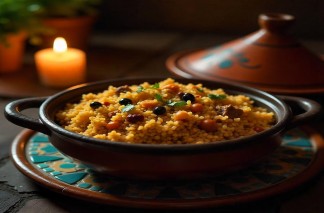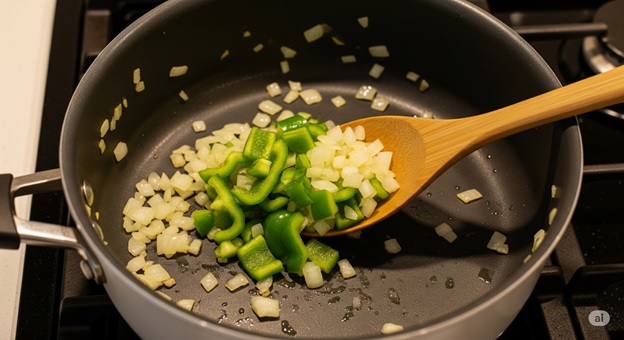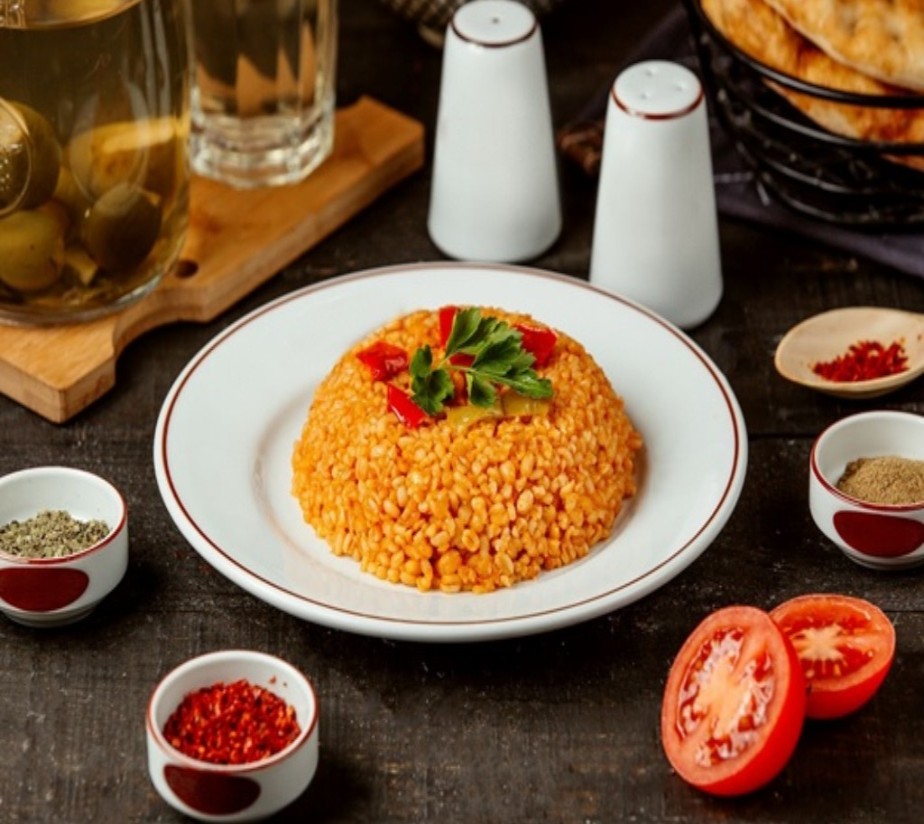Bulgur Pilaf is a healthy, easy and very rewarding side dish to serve with a meal that uses coarsely ground bulgur wheat, cooked by simmering in a large fat broth containing onions, green pepper and aromatic spices. This Bulgur Pilaf recipe would be a conventional substitute for white rice as it has a deep, nutty flavour and is fibre-rich and very comforting yet has an earthy taste.
Turkish Bulgur Pilaf is a favourite at Turkish homes, which is accompanied by grilled meats, kebabs, yoghurt meals, or even makes a great light main course with pickles or salads. It is fast to prepare, digestible and good as a lunchtime meal or a dinner meal.

About Bulgur Pilaf
Bulgur Pilaf is a meal commonly referred to as bulgur pilav in Turkey and the dish is eloquent as far as the Turkish affinity to grain compliments is concerned. It is not only a dish of Anatolian cuisine but also has eastern-western differences across the region—it includes chickpea, vermicelli, or red pepper paste in some variants.
Prepared out of medium-grade or coarse bulgur (cracked wheat), the dish has a bit of a chewy texture that is quite perfect for soaking up the rich tomato-based broth. It is vegetarian-friendly, naturally vegan, full of nutrients and is made up of items found in everyday households.
It can be served at family dinners as well as on the table in a mezze style, so it is very common when it comes to being warm and well-balanced. If you’re learning how to make Bulgur Pilaf, this version is a great place to start.
Ingredients and Substitutes of Bulgur Pilaf
- Coarse Bulgur Wheat (Pilavlik Bulgur) – It is the main ingredient. The medium or coarse grade gives the best texture. Fine bulgur is not recommended.
- Olive Oil or Butter – To give richness. Olive oil makes it vegan, and butter adds taste.
- Onion (finely chopped) – Makes the base sweet and savoury.
- Tomato Paste – Introduces depth, colour and flavour. Fresh tomatoes can be used alternatively.
- Green Bell Pepper (chopped) – Optional, but goes well with the sweet and slightly peppery flavour.
- Water or Vegetable Stock – Liquid for cooking. Stock improves taste.
- Salt and Black Pepper – To season the bulgur pilaf.
- Red Pepper Flakes or Aleppo Pepper (optional) – For a little heat and colour.
- Chickpeas (Optional) – To have protein, a heavier version.
- Fresh Parsley or Dill (to garnish) – Gives a fresh touch before serving.

Cooking of Bulgur Pilaf
Saute the aromatics
- On medium heat, in a medium-sized saucepan, warm 2 tablespoons of olive oil or butter.
- To that add 1 finely cut onion and fry, till tender and translucent, about 4–5 minutes.
- As an option, include 1 chopped green bell pepper and cook for another 2 minutes.
- Add in 1 tablespoon tomato paste and fry until it turns darker.

Bulgur and Liquids
- Mix another cup of coarse bulgur wheat in the pan and stir thoroughly so that it can be covered with the onion-tomato mixture.
- Add 2 cups of water or vegetable stock. To it, add salt and pepper to taste.
- Boil the mix gently.
Take a simmer and steam
- Lower heat to simmer, cover the pot and simmer for 12–15 minutes or until the bulgur is soaked in the liquid.
- The heat can be switched off, and it needs to rest for more than 5–10 minutes and cover again so that the grains have a chance to steam and fluff.

Fluff and Serve
- Ruff up the Turkish Bulgur Pilaf with a fork and serve topped with fresh chopped parsley or dill.
- It can be optionally topped with a bit of olive oil before serving.
- This Mediterranean pilaf is light, fluffy and full of depth.
Serving Suggestions
- Serve it with grilled meats, kebabs, kofta or roasted vegetables.
- Serve alongside plain yoghurt or Cacik (Turkish yoghurt with cucumbers).
- Warm it up, or serve it in picnics in lunch boxes at room temperature.
- A light contrast on the top, either pickled vegetables or fresh tomato salad.
Tips On Bulgur Pilaf
- Never use fine bulgur but use medium or coarse bulgur to get exactly the pilaf texture.
- Leaving the pilaf to rest after being cooked will enhance the texture and flavour.
- Add tomato paste to your taste, more for the depth of the tanginess, less to get a lighter one.
- To make it more filling and nutritious add chickpeas or lentils.
- Put the remaining in an airtight container, and reheat afterwards.
Bulgur Pilaf is a tiny nutritious and flavour-packed humble dish, convenient in a variety of ways. It can be accompanied by a feast that is served on it, or it can be a simple meal in a bowl in itself, nevertheless, it is one of the examples where healthy grain recipes from Turkish cuisine manage to make simple grains into a tasty heartiness.
Whether you’re searching for an easy Bulgur Pilaf or a traditional Turkish Bulgur Pilaf with tomatoes, this dish checks all the boxes.














